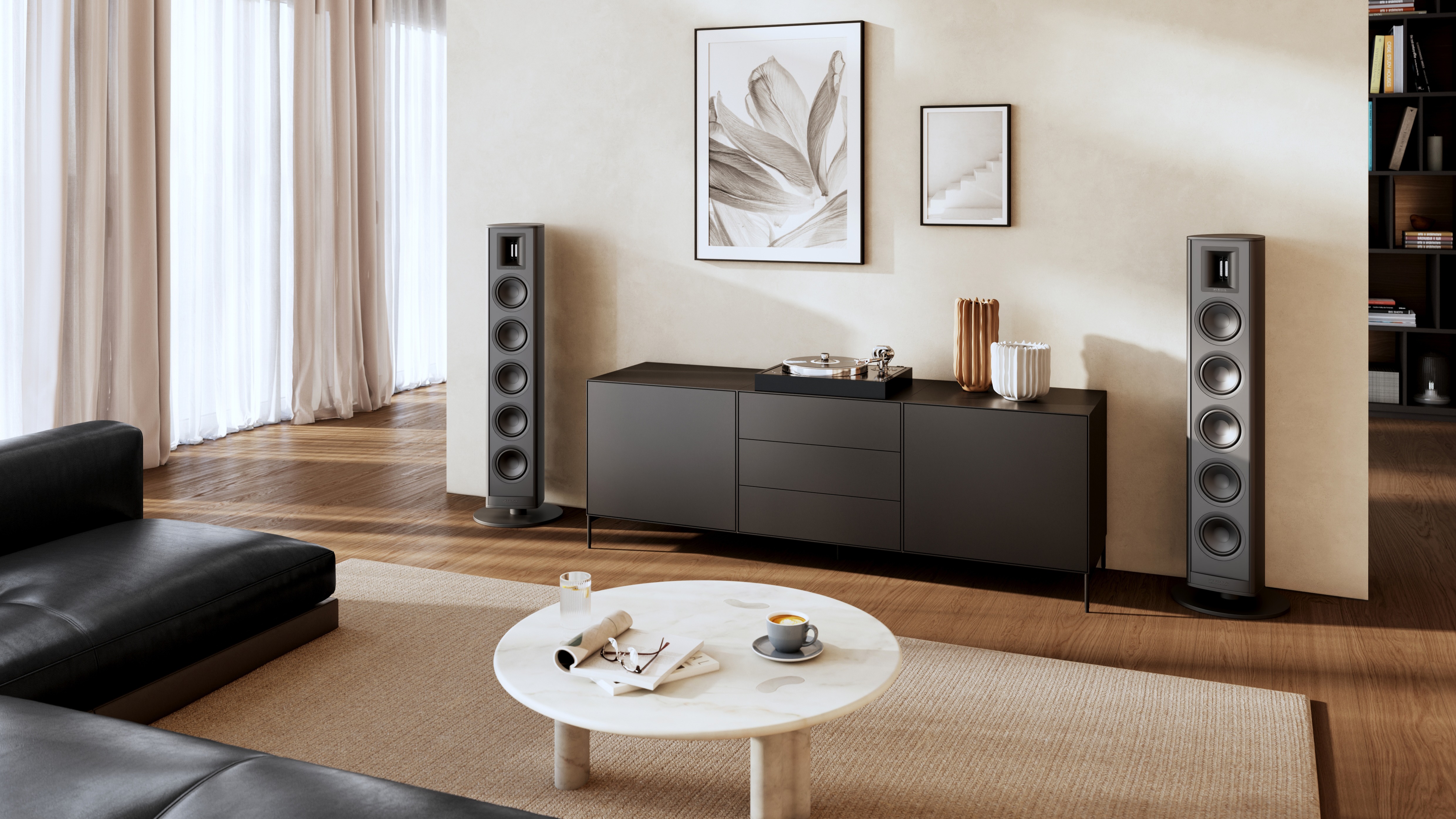Audio file: Rod Jones, Idlewild guitarist and producer
Kicking-off a series of interviews with musicians and producers, we talk vintage hi-fi, live recordings and the role of a car stereo in the production process, with Rod Jones.

“If less is more,” quips Rod Jones, “imagine how much more, more can be! A lot of musicians, including myself, have that mentality, and it just can’t work.”
For Jones, best known for his work as guitarist, songwriter and founding member influential Scottish alternative band Idlewild, perspective has changed somewhat since migrating to the other side of the mixing desk. Currently at work on a live album recorded at the band’s run of shows at the end of last year, it is now 12 months since the release of Jones’s biggest project so far as a producer, Idlewild’s seventh studio album Everything Ever Written.
Some things won’t change, of course, such as an appetite for vintage hi-fi. When we spoke, Jones was scouring around to replace his old Sony amplifier, adamant to avoid the new in favour of brushed steel, big dials and that era-defining warmth.
Here, we delve into habits in the studio and at home, finding out why vinyl is king and why there are record producers sitting in car parks around the world.
What Hi-Fi?: Let’s start at home.
Rod Jones: At home, I have an old pair of speakers from the late '80s, big old Celestion speakers that you don’t really get any more unfortunately; I’ve had to scour the internet for parts when they’ve broken. I’ve got a few boxes of drivers for them sitting at the back of the storage cupboard – they’re the one thing I really don’t want to lose.
Most of my hi-fi equipment is from the '70s and '80s – good, old-fashioned valve and big speakers – I tend to find that sounds more what I’m used to. I’m sure I could buy a new amp and speakers that sound just as good, but it’s like anything, you become accustomed to hearing things a certain way and you think they sound better that way. But there’s definitely a warmth to '70s hi-fi that fits to vinyl very well. It’s probably a romantic notion in my head, and if I did a blind test I wouldn’t notice the difference, but it feels different to me.
The latest hi-fi, home cinema and tech news, reviews, buying advice and deals, direct to your inbox.
Even just aesthetically, I prefer to look at a pair of wooden, old speakers than a modern, sleek little black box. There’s something in your brain that connects what you see and what you hear, and it does make a difference to what you hear. The brain works in a funny way, doesn’t it? I suppose if you see something you probably hear it differently. If I were to go out and buy a fancy stereo I’m sure it would sound much better, but I just like what I like, I suppose.
WHF: So is it hand-me-down kit?
RJ: Your parents, they move onto the newer thing and the newer thing, because they bought them when they were new, and they’re like, “Do you want this old one?”, and absolutely I want this old one, I don’t want the new one! So we’ve had it for many, many years. It’s been passed on over the years, and there’s something about that brushed steel and those big dials and knobs; it’s just more tactile, and you get a feel from it – the same as you do when you put on a record, rather than a CD in a slot of plugging a jack socket into your iPhone. There’s almost like a ritual to it that puts your brain in a different position.
Richness and sparkle

WHF: Do you listen mostly to vinyl, then?
RJ: I tend to listen to things on vinyl at home. Of course I’ll use something like Spotify if I want to find something really quickly, or if you’ve got guests round and you don’t want to get up every fifteen minutes to change the record over, but if I’m at home I’ll mainly listen to vinyl. It has a better sound for me; it sounds livelier. It is different, it’s massively different, and it’s not just bottom end and bass with vinyl; there’s richness and a sparkle that just isn’t there in digital music. It’s just a different sound, really, that it’s impossible to recreate.
Most home hi-fi is very generous sounding, because they’re meant for pleasurable listening, so most people boost the loudness on their stereo at the top and bottom to make it louder and beefier sounding. A lot of people listen that way, I think because of trying to compensate over the last ten, 15 years for not having vinyl, because that does have that low end and that warmth – with the colder sound of digital music, people are trying to recreate that to some extent.
WHF: How about when you’re working on a track?
RL: As a producer, nine times out of ten you’re just checking stuff in your car once you’ve finished mixing, because that’s the stereo you’re most used to. You’re constantly listening to music in the car, and once you’re that used to something it’s great for reference. But I’ll always check music on every set of speakers and headphones that I have: iPod headphones, my big speakers at home, car speakers, everything you can get your hands on. If you can make it sound good on a bad stereo, that’s always the trick.
For studio monitors, a lot of people go for these very vibey, bottom-heavy, gratifying set of speakers that give you a feel when you’re mixing, but we use a pair of ProAcs, which are a lot less flattering. There’s a lot to be said for Yamaha’s NS10 as well, because they give you a very accurate picture of the middle. To me, it’s finding a balance between something that isn’t going to make you want to cry each time you’re listening to something but isn’t overly flattering, so you think you’ve done a great job and then go and sit in your car and listen to it and think, “Oh shit, what a mess”.
I’ll always check a track on every audio source available, but the go-to has always been the car stereo, sort of leaning into the middle of the car to get a better idea of the stereo imaging, sat in the car park outside the studio, looking like a weirdo sat in the middle of your seats.
WHF: And what exactly is it you’re listening for when hearing a mix back?
RJ: It really depends on what you’re doing, genre to genre and project to project. I’m very much a fan of ‘real-sounding’ records. I think nowadays, certainly, there’s a lot of over saturated, over compressed examples, with shiny, fake-sounding drums, over-squashed guitars and vocals, which, when you look at it, the wave form’s a sausage rather than having any nuance to it.
For me, I’m listening to hear life in the instruments, really, and space. An instrument on its own sounds different, so when you’re listening on its own you might want to have a lot more bottom end, have it heavier down there, but when you put drums and bass into the equation those things start to sum up. So you have to take the bottom end out of the guitar so it’s not muddling up the drums or the bass – it’s about that space you create so you’re giving everything its own frequency range and space in the mix, from panning to EQ.
And thinking about the front and back dimensions as well, how far forward or back they are in the mix. So I think of it in those four dimensions: your left and right, and forward and back. I tend to mix the way I would look at a band. In a very simple way, that’s the way I’d use reverb or delay: to put those things further back or further forward, in the way you’d listen to them.
Difficulties of digital
WHF: Do you mix differently when doing so for different sources?
RJ: Not really, that’s really a mastering thing. Some people do – people will mix predominantly for vinyl or whatever – but I think it’s really more about headroom then and what your format can take. But I do know a lot of mastering engineers who do master specifically for vinyl or specifically for MP3. Most mastering engineers, when you are mastering specifically for CD or vinyl, will offer you an MP3 master, an iTunes master, because it does make significant changes to what you’ve done.
It was getting to a point where you were releasing stuff digitally, and you’d go through all this work and get it mastered and think, “Well that was a waste of time”, because it’s going to sound completely different by the time it’s been squashed into some sort of digital format. You can go overboard with that, obviously, but it does make sense to master differently for vinyl, it does make sense.
WHF: You’re producing a live album from the most recent Idlewild tour at the moment; how does that differ to working on a studio album?
RJ: It’s not a quick job, mixing a live record. Mostly people say you’ll be working ten times longer and ten times harder, and it’ll be ten times worse than anything else you’ve ever done. To be honest it’s something I wouldn’t even have taken on ten years ago, regardless of my own mixing ability, just the way we’re able to play together as a band now. I think there is a confidence there, not so much that we’re tight – we’ve been a tight band for a long time in various incarnations – but there’s a swagger there, sonically I suppose, and that confidence takes pressure off you and makes you play better.
There’s no red light fever as with when you’re recording; we take the stage feeling we’re going to play a good gig, and that makes my job a bit easier. A live record is a very different thing; it wants to capture what happened that night. It’s not a case of changing much sonically, it’s a case of making it sit right and sound lively and tight and good. We’re at a level now where we have a sound that is pretty much the same every night, and it’s just about capturing that, really.
Idlewild’s seventh studio album Everything Ever Written is on sale now
